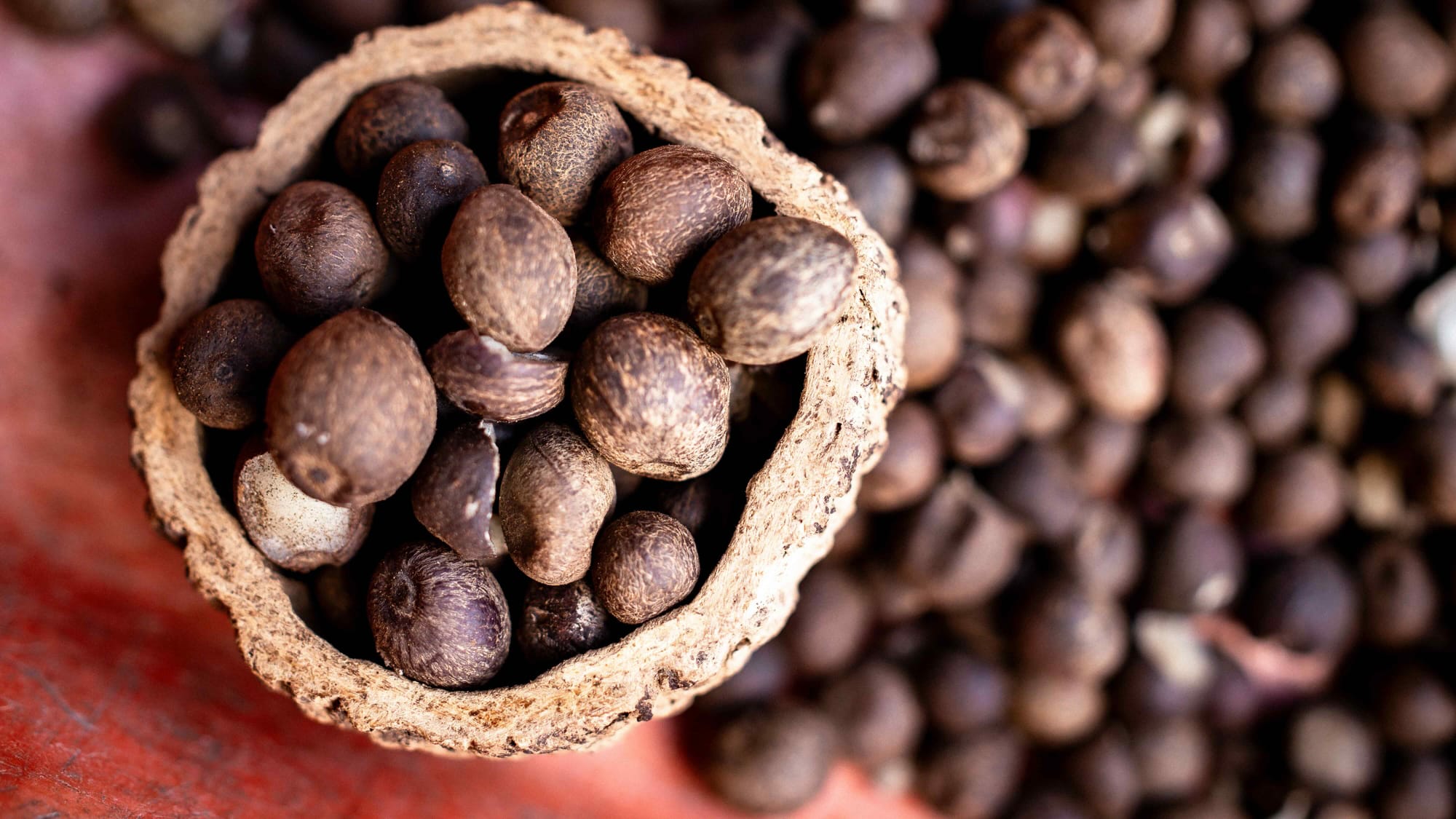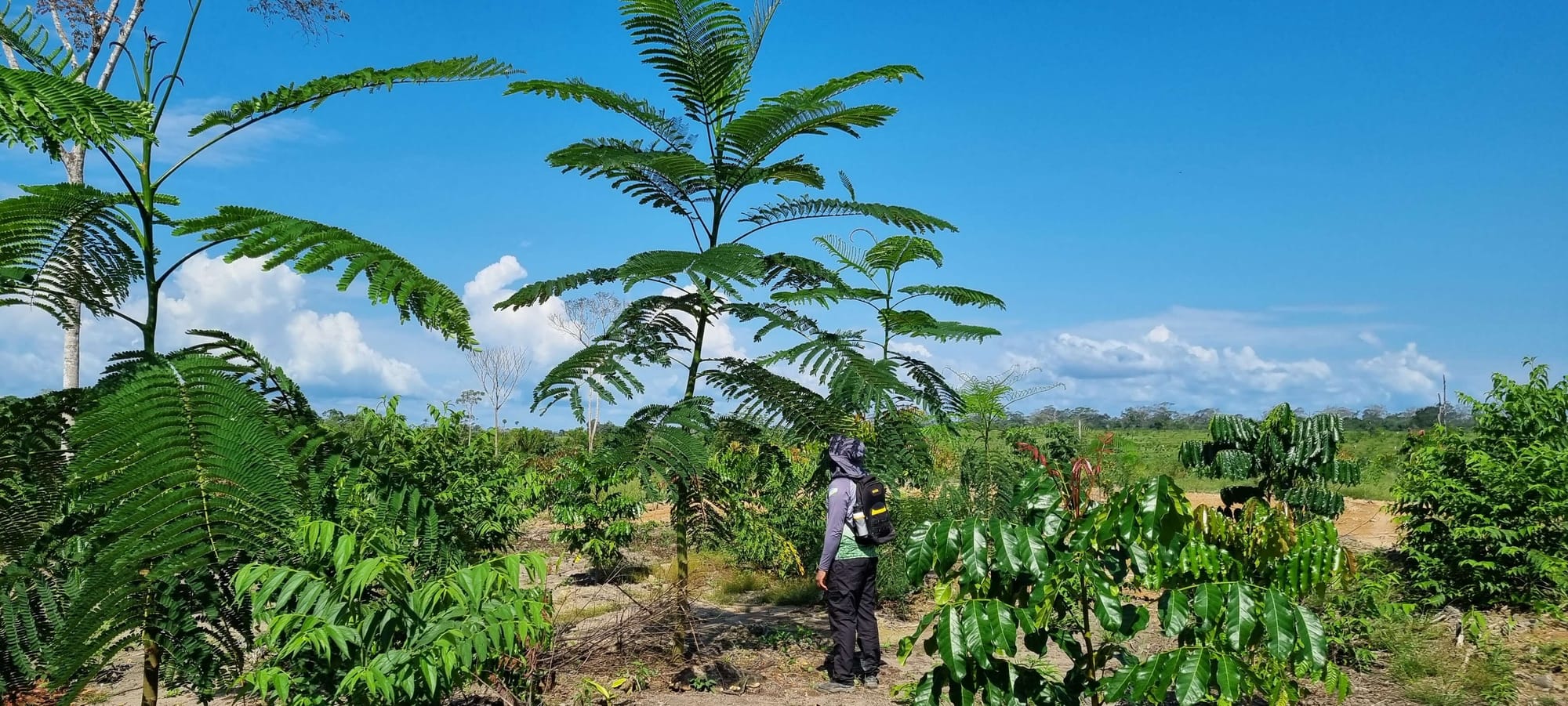This year’s COP30 in Brazil marks 10 years since the Paris agreement, and controversy is swirling once again. The host is preparing to expand fossil fuel extraction in the Amazon, a four-lane highway built to modernize Belém before the event has cut swathes through protected rainforest, and Indigenous voices are being sidelined.
Still, COP matters for climate policy. And the backdrop is significant: Brazil holds some of the world’s most vital–and threatened–ecosystems. The Amazon rainforest is 18% destroyed; at 20%, scientists warn the entire ecosystem could collapse. Brazil’s Atlantic Rainforest has shrunk from nearly 1.3 million square kilometers to just 12% of its original size.
Forests don’t disappear on their own, they’re cut down and burned, often by industries chasing short-term profit. In the Amazon, cattle ranching and soy production for feed are the main drivers. Meanwhile, communities who’ve stewarded these forests for generations are pushed aside.
While delegates debate policy inside COP, we're working with communities across Brazil to protect what’s left and restore what’s been lost. From Indigenous patrols defending the Amazon to regenerative timber systems that keep forests standing, these projects show that conservation and livelihoods can go hand in hand.
Patrolling the Amazon's frontlines
Indigenous communities in the Amazon aren't just living in the forest–they're defending it, risking their lives to protect their ancestral lands from illegal logging and industrial agriculture. In the Xingu River Reserve, 16 Indigenous communities across 150 villages patrol their land borders to keep illegal loggers out, fight fires deliberately set to clear land, and campaign for UNESCO protection.
Through our partnership with Planet Wild, we're funding three years of patrols, providing essential firefighting equipment, and supporting their fight for legal protection. With the Amazon teetering on the edge of collapse, their efforts aren't just about preserving trees—they're about preventing a climate catastrophe that would affect us all.
Turning forest protection into fair income
Most of the Amazon's economy still depends on cutting down trees. But what if communities could earn more by keeping forests standing?
Since 2024 we’ve partnered with BioTara, who work with Indigenous and traditional forest communities, including Quilombolas (descendants of escaped enslaved people with deep land connections) and Ribeirinhos (river communities), to sustainably harvest Amazonian bioactives used in cosmetics.

Instead of selling raw materials cheaply to middlemen, communities process and sell oils, butters, and extracts themselves, meaning ten times the value stays within the forest. This income funds education, healthcare, and development projects. BioTara creates an ethical bridge, connecting forest stewards directly to major beauty brands.
One ingredient harvested is Jambú, a plant with flowers and leaves that have a natural numbing effect. Used in Amazonian cuisine and increasingly in cosmetics as a natural, short-term alternative to botox, it proves that forest value goes far beyond timber.
Rewriting the rules of forestry
Our partner Radix is proving that timber production can help forests rather than destroy them. On 2,000 hectares of formerly degraded cattle land in the Amazon, they plan to create a successional agroforestry system that combines food crops, timber, and dedicates 50% of the land to conservation.
Instead of monoculture plantations, Radix will plant diverse species with staggered harvest cycles. Fast-growing Paricá matures in seven years, while high-value Mahogany and Teak take 20-25 years. They will mix these with trees like Andiroba (used for oils), Cumarú (Amazonian vanilla), and Castanha do Pará (Brazil nut), creating multiple revenue streams while the forest matures.

Selective harvesting keeps the forest standing and every tree cut is replanted. Crucially, they focus on high-value timber for buildings and furniture—locking carbon into long-lasting products rather than cheap wood that ends up as firewood that releases CO2.
After the final harvest in 25 years, the forest will be left entirely for conservation. Ecosia’s investment would help Radix scale this model from 2,000 to 50,000 hectares, showing that responsible forestry can restore degraded land into thriving forests, support livelihoods, and reshape the timber industry.
Beyond the Amazon: Atlantic Rainforest restoration
We're also working in Brazil's Atlantic Rainforest, where less than 12% of the original forest remains.
With CEPAN, we're using the Muvuca method, a clever technique which mixes native seeds with "green fertilizer" agricultural species. These fast-growing plants improve soil and create the right microclimate for native species to sprout. After 18 months, only native species remain. The method also creates income opportunities for local communities as seed collectors.
IPÊ creates forest corridors to connect isolated forest patches, making it easier for wildlife to move safely between areas in search of food, shelter, and mates—critical for species survival in fragmented landscapes.
And our partner Instituto Terra de Preservação Ambiental (ITPA) doesn’t just plant trees–they fight the fires that threaten at least 25 million trees through firefighting, monitoring, and raising awareness. Your searches have helped the team acquire vehicles, pumps, protective equipment, and signposts around planting sites warning about illegal fires with a direct hotline for reporting.
Agroforestry for landless farmers
In southeastern Minas Gerais we’re addressing social as well as environmental restoration. Through Grupo Gaia, Brazil's first purpose company, we're supporting families from the Landless Farmers Movement (MST)—families who lost land to powerful interests or come from generations without access to land despite Brazil's vast degraded areas sitting unused.
The project plants around 250,000 trees using successional agroforestry—mostly coffee intercropped with fruit species chosen by local cooperatives. It's turning degraded land into productive agroecology while giving families the chance to become landowners, growing food and building futures.
Finally, in São João do Araguaia, Pará, our partner Meli Bees is implementing 25 hectares of agroforestry systems together with family farmers, focusing on regenerative agriculture to improve soil quality, income, and food security.
Why Brazil matters
Brazil holds extraordinary biodiversity and stores massive amounts of carbon. What happens to its forests affects global climate stability, weather patterns, and countless species—including us.
But these projects aren’t just about the environment. They involve communities fighting for their land, their livelihoods, and their futures. They're about proving that forests are worth more standing than cut down, ecologically and economically. They show that protecting and restoring forests can create jobs, support Indigenous rights, reform broken land systems, and fight climate breakdown.
Keep searching with Ecosia and know that you're supporting these communities—and the forests they're fighting to protect.